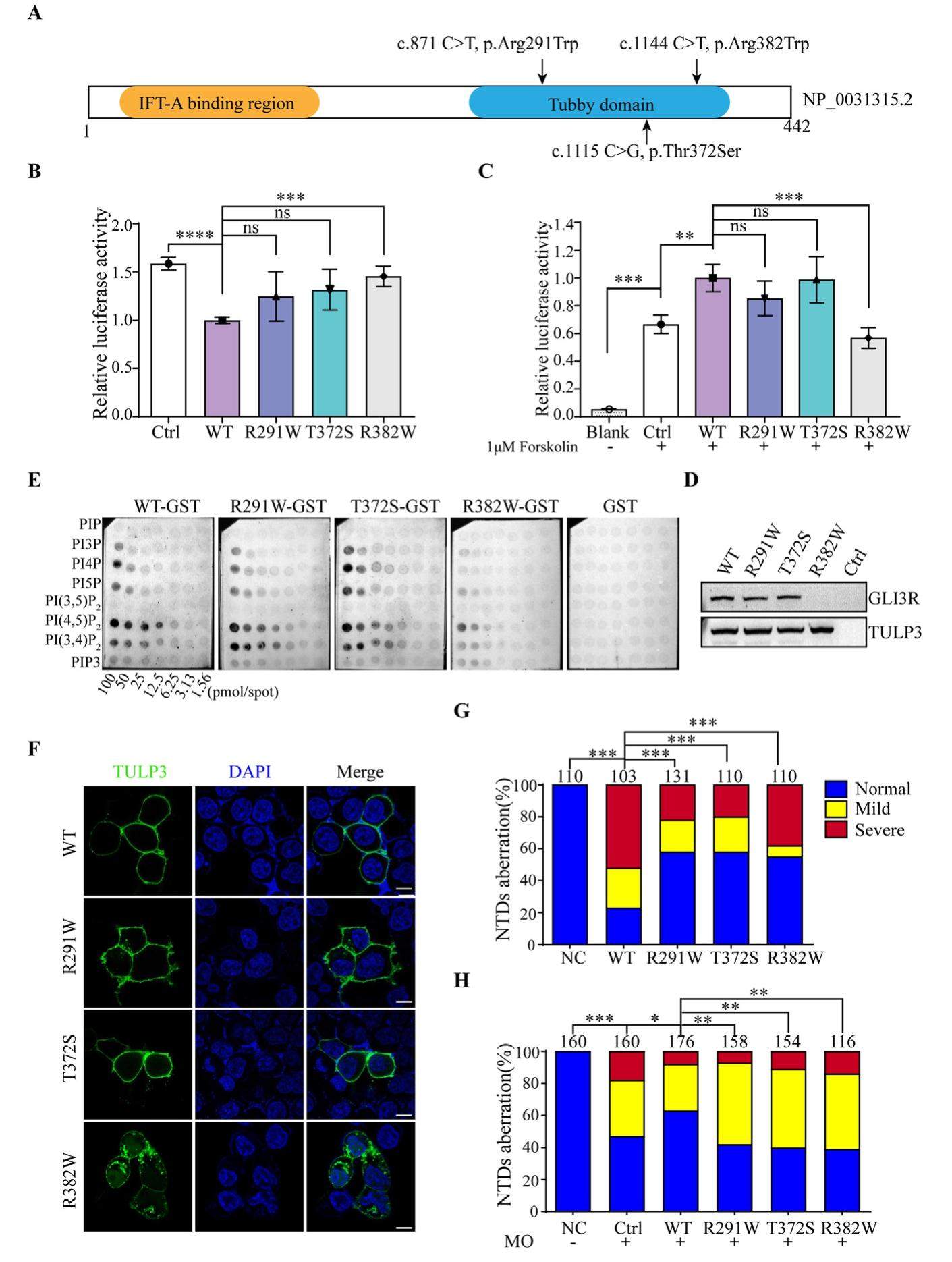
Rare variants in TULP3 abolish the suppressive effect on sonic hedgehog signaling and contribute to human neural tube defects


Neural tube defects (NTDs) are among the most common human birth defects affecting about 1/1000 live births worldwide. The etiology of NTDs is attributed to complex genetic and environmental risk factors. Over 200 genes have been identified to cause NTDs in animal models, suggesting the involvement of distinct molecular basis in NTD etiology, including the Sonic hedgehog (Shh) signaling. Recently, several negative regulators of Shh pathway null mutants displayed severe NTDs, indicating abnormal activation of Shh signaling is commonly associated with NTDs. Tubby-like protein 3 (Tulp3) is a typical repressor of Shh signaling and knock out Tulp3 causes severe cranial and caudal NTDs in mice. This strongly implied that TULP3 is essential for embryonic neural tube development and that variants in TULP3 might contribute to human NTDs, which hasn't been demonstrated thus far.
